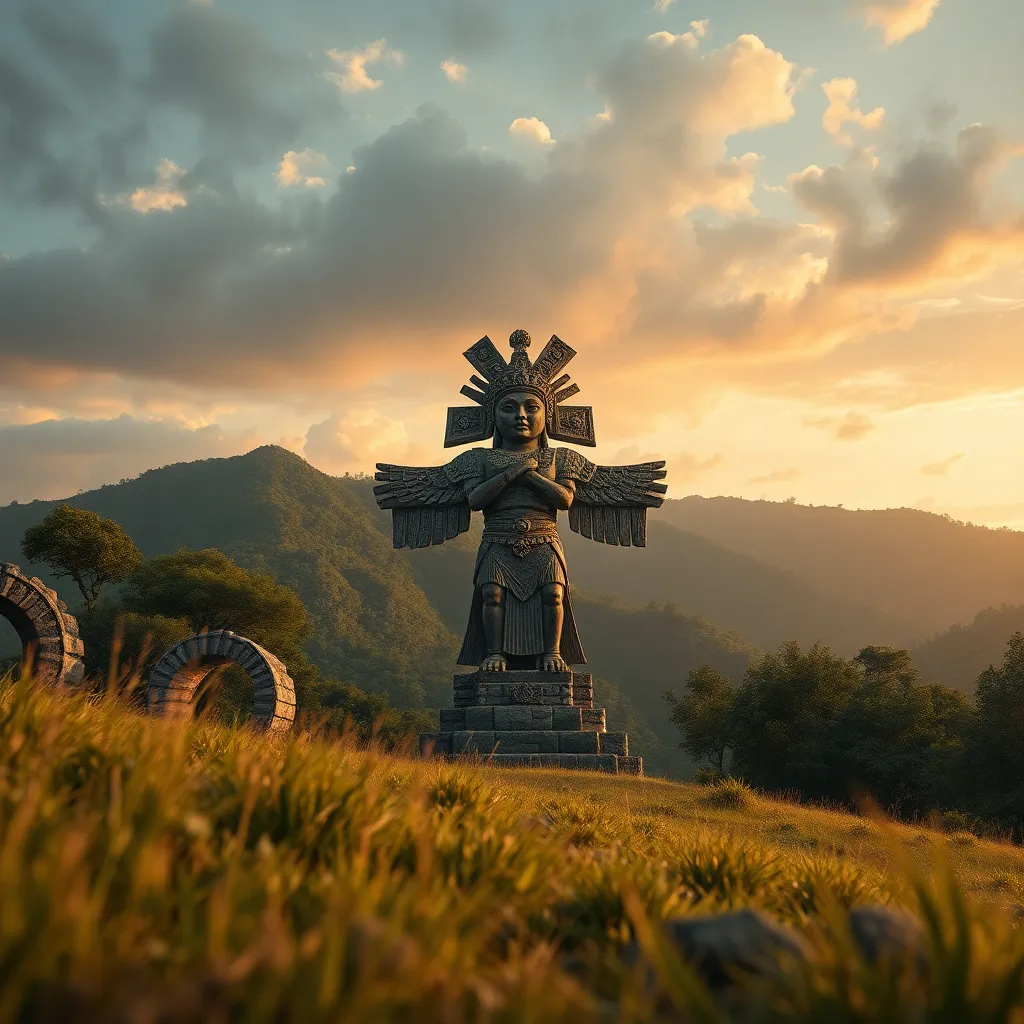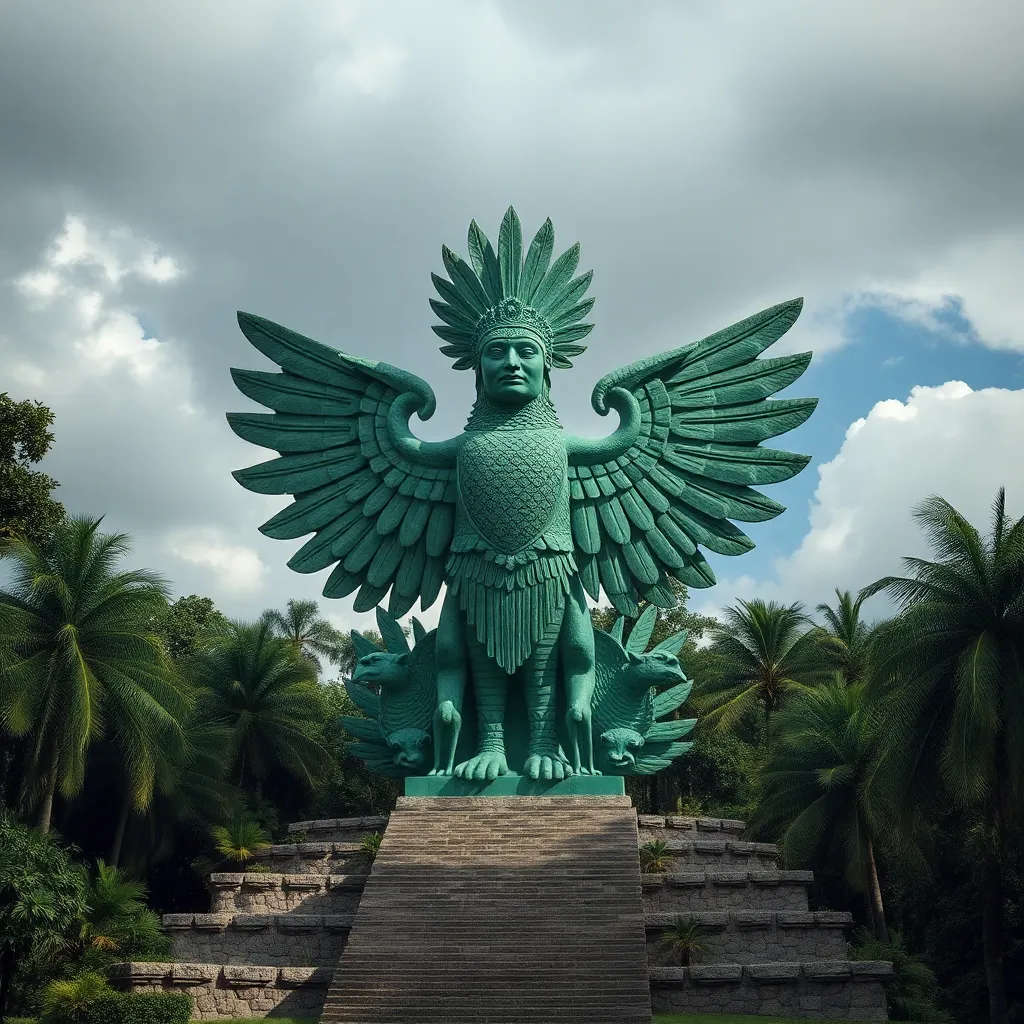The Ahuizotl: A Symbol of the Importance of Nature in Human Life
I. Introduction
The Ahuizotl, a creature deeply rooted in Mesoamerican mythology, is often described as a water-dwelling beast resembling a dog with a hand at the end of its tail. This mythical entity has fascinated and terrified those who have heard its tales, serving as a potent symbol of both nature’s beauty and its dangers.
In the rich tapestry of Aztec and Nahua folklore, the Ahuizotl is not merely a creature of fear but a representation of the intricate relationship between humans and the natural world. Through exploring its characteristics and legends, we can better understand the significance of the Ahuizotl as a symbol of nature’s importance in human life.
II. The Mythology of the Ahuizotl
The origins of the Ahuizotl can be traced back to the ancient Aztec civilization, where it was believed to inhabit lakes and rivers. In Nahua folklore, it was often described as a guardian of water, embodying both the nurturing and destructive forces of nature.
The characteristics of the Ahuizotl are striking. It is said to have a sleek, dark fur coat, wolf-like features, and an elongated tail that ends in a human-like hand, which it uses to drag its victims underwater. This eerie combination of familiar and unfamiliar traits makes the Ahuizotl a unique figure in mythology.
Numerous stories surround the Ahuizotl, often depicting encounters with unsuspecting humans who ventured too close to its watery domain. These legends serve not only as cautionary tales but also as reflections on human vulnerability in the face of nature’s might.
III. Ahuizotl and Its Environment
The Ahuizotl’s habitat is primarily associated with lakes and rivers, emphasizing its ecological significance within Mesoamerican culture. This creature symbolizes the need for a harmonious relationship between humans and their environment, particularly concerning water sources.
Water bodies, as sacred spaces, are intimately linked to the Ahuizotl, which is often seen as a protector of these vital resources. The creature symbolizes the delicate balance of nature, reminding us that while nature can provide sustenance and beauty, it can also pose dangers if disrespected.
IV. The Ahuizotl as a Cautionary Tale
Encounters with the Ahuizotl in folklore often carry profound lessons. These stories frequently illustrate the consequences of human actions that disrupt the natural order. The Ahuizotl serves as a reminder that neglecting the environment can lead to dire repercussions.
- Respect for nature: Folklore involving the Ahuizotl encourages respect for the environment and the creatures that inhabit it.
- Awareness of consequences: The tales reflect the importance of understanding the potential outcomes of exploiting natural resources.
- Balance and sustainability: The Ahuizotl embodies the need for balance between human needs and ecological preservation.
Through its stories, the Ahuizotl warns against environmental exploitation, urging humanity to maintain a respectful distance from the forces of nature.
V. Cultural Impact and Representations
The Ahuizotl has left an indelible mark on art, literature, and popular culture. It is often depicted in paintings, sculptures, and literature, representing the duality of nature as both a giver and taker of life.
When compared to other mythical creatures representing nature, such as mermaids or water spirits, the Ahuizotl stands out due to its unique blend of beauty and terror. This complexity in its representation allows for diverse interpretations and discussions about humanity’s relationship with nature.
Contemporary interpretations of the Ahuizotl reflect ongoing concerns about environmental preservation, showcasing its relevance in today’s society. By drawing parallels between ancient myths and modern environmental challenges, the Ahuizotl continues to inspire dialogue about nature’s importance.
VI. The Ahuizotl in Modern Conservation Efforts
Folklore like that of the Ahuizotl plays a crucial role in promoting environmental awareness. Stories that have been passed down through generations can serve as powerful tools for education and conservation.
By integrating the Ahuizotl into conservation initiatives, communities can draw on cultural heritage to inspire action. This approach emphasizes the importance of storytelling in engaging local populations and fostering a sense of responsibility toward the environment.
Community engagement through cultural practices, such as storytelling festivals and educational programs, can help bridge the gap between ancient wisdom and modern conservation efforts, reinforcing the message that nature deserves respect and protection.
VII. The Importance of Nature in Human Life
The interconnectedness of humans and the natural world is a theme prevalent throughout history and cultures. Nature is not only a source of resources but also plays a vital role in mental health, spirituality, and cultural identity.
- Mental health: Studies show that spending time in nature can reduce stress and improve overall well-being.
- Spiritual connection: Many cultures view nature as sacred, fostering a deep spiritual relationship with the environment.
- Cultural identity: Nature shapes cultural practices, traditions, and stories, highlighting its importance in defining community identities.
The lessons from the Ahuizotl reflect the need for a balanced and respectful relationship with the natural world, reminding modern society to consider the impact of its actions on the environment.
VIII. Conclusion
In summary, the Ahuizotl serves as a potent symbol of nature’s significance in human life. It encapsulates the beauty and peril of the natural world, urging respect and understanding from humanity. As we navigate the challenges of the modern age, it is crucial to recognize and preserve the natural world around us.
By reflecting on the stories of the Ahuizotl, we are reminded of our responsibilities to the environment and the necessity of fostering a respectful relationship with nature. The enduring legacy of the Ahuizotl continues to inspire respect for the natural world, encouraging us to embrace a sustainable future.



